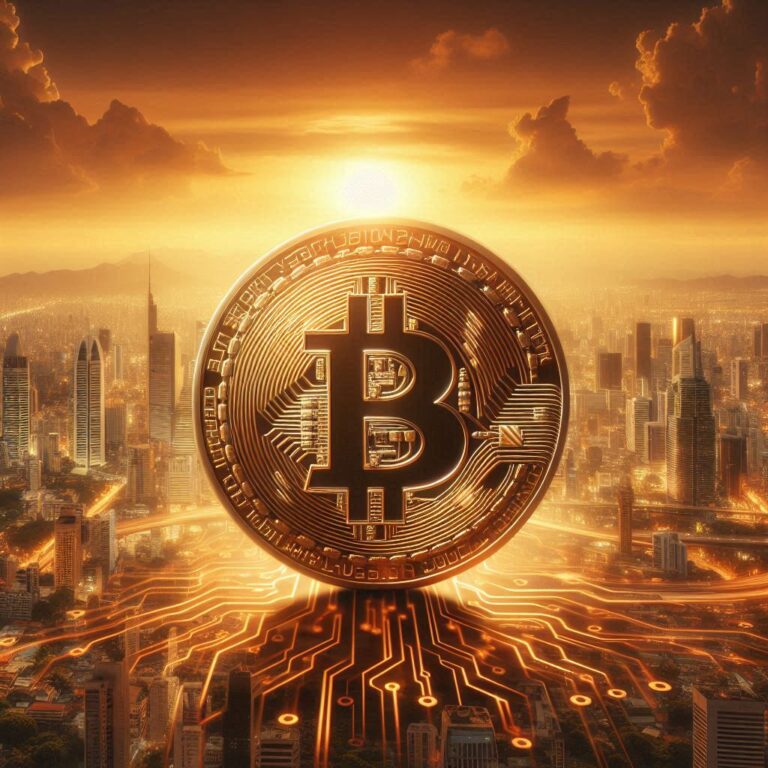HBO Documentary Proposes Peter Todd as Bitcoin’s Creator, but He Denies Being Satoshi Nakamoto
In a recent HBO documentary titled Money Electric: The Bitcoin Mystery, Peter Todd, a notable figure in the Bitcoin community, has been suggested as the potential identity of Satoshi Nakamoto, the enigmatic creator of Bitcoin. Todd has firmly refuted these claims, expressing concerns about the film’s speculative nature and the implications it has on his safety.
Short Summary:
- Peter Todd is implicated as Satoshi Nakamoto in HBO’s latest documentary.
- Todd strongly denies the allegations, criticizing the film’s approach and speculations.
- The documentary’s direction has sparked renewed discussions within the cryptocurrency community.
In the realm of cryptocurrency, few questions have captivated enthusiasts and skeptics alike as much as the true identity of Satoshi Nakamoto, the pseudonymous creator of Bitcoin. Recently, the HBO documentary Money Electric: The Bitcoin Mystery has reignited this debate by pinpointing early Bitcoin developer Peter Todd as a potential suspect. While filmmaker Cullen Hoback presents intriguing theories about Todd’s role in Bitcoin’s inception, Todd has vocally dismissed these claims, stating emphatically, “I’m not Satoshi.”
The documentary, which premiered on HBO’s streaming platform, Max, offers a narrative that traverses the globe in search of the elusive Nakamoto. Hoback, who previously directed Q: Into The Storm, undertakes a treasure-hunt style investigation into the world of Bitcoin, grounding much of the speculation on Todd’s background and comments made throughout the years. As part of the documentary’s arc, Todd is portrayed as a key player amidst a cast of notable figures, including Adam Back and Greg Maxwell, who have often been linked to the creation of Bitcoin through their early participation in the cryptocurrency community.
Peter Todd, listed as a consultant for applied cryptography on GitHub, has a storied career within the cryptocurrency space. He has held positions at various firms, including Bitcoin security company Coinkite and other projects focused on privacy and blockchain technology. However, his strong defense against the documentary’s implications stems from his concerns about public and personal safety as a result of being associated with Nakamoto—a figure whose hidden holdings reportedly maintain control over nearly 1 million Bitcoin, valued at approximately $62.4 billion today.
“If Cullen Hoback had actually wanted to find Satoshi, he would have presented his theories to Adam Back and me to see if there were trivial flaws in them.”
In a flurry of responses on social media platform X (formerly Twitter), Todd showcased his discontent with how the documentary approached his candidacy as Nakamoto. He criticized the filmmakers for what he deemed exaggerated claims and noted that the documentary’s speculative nature could not only mislead viewers but also put his safety at risk. “These claims are irresponsible; they fuel conspiracy theories,” he pointed out, emphasizing that the filmmakers did not consult him before airing their groundbreaking narratives.
Hoback’s direction in the documentary tries to build a narrative using various facets of Todd’s life, including his education in Integrated Media from OCAD University, and his work with early Bitcoin forums that discussed the technicalities of cryptocurrency. The film notes that Todd was merely 23 years old when Bitcoin’s white paper was released in 2008, raising skepticism among viewers about his capability to have spearheaded such a groundbreaking innovation at that age.
One of the documentary’s pivotal moments occurs when Hoback interviews Todd about postings from 2010 where Todd interacted with Nakamoto. Hoback interprets Todd’s responses as unaware slips of identity that could signify Todd’s role as Nakamoto. Todd, however, refuted this interpretation, arguing that it was a typical forum interaction among those deeply involved in Bitcoin development.
“This is clearly ridiculous! It is just an example of me replying to Satoshi with a snarky, pedantic and accurate comment … There is zero reason to believe this was Satoshi.”
Additionally, in discussions around the documentary, Todd has expressed that he believes Hoback’s sole intent was to produce a popular theory rather than uncover the truth. Todd’s sentiments echo a larger frustration within the cryptocurrency community regarding the sensationalist portrayals of Nakamoto’s identity in media and the perpetual cycle of unsubstantiated claims. “You come up with some crazy theories. It’s ludicrous,” Todd quipped during a conversation in the documentary, encapsulating his opinion on the risks of jumping to conclusions regarding the creator of Bitcoin.
As the mythos surrounding Nakamoto continues to grow, reactions to the documentary have been mixed, with many in the cryptocurrency sector deriding it as another instance of media sensationalism. Critics have taken to social media to express frustration over the documentary’s lack of rigor in substantiating the claims made regarding Todd’s potential identity. The broader conversation about Nakamoto’s anonymity has persisted through the years, with declarations that “we are all Satoshi” becoming a common trope amongst Bitcoin enthusiasts.
Notably, Adam Back, another early Bitcoin developer featured in the documentary, took to X to deny any claims linking him to Nakamoto, emphasizing the importance of keeping the identity of Satoshi a mystery. “In 2013 I went into the IRC and asked lots of questions to catch up with Bitcoin details. … No one knows who Satoshi is. And that’s a good thing,” he stated, reflecting a common sentiment among early Bitcoin developers who value the privacy that envelops Nakamoto’s identity.
“Loose lips sink ships. Gossiping about secrets while fun is a recipe for leaks.”
Gregory Maxwell, another prominent figure and co-founder of Blockstream, rebuffed Hoback’s logic for implicating Todd as Satoshi, stating that the rationale behind the documentary’s assertions is flawed. He pointed out that Todd’s forum account was not directly linked to his real identity during their early interactions. “If there had been a slipup, he could have just abandoned the account,” Maxwell argued, asserting that the documentary’s connections need to be better substantiated.
As the documentary’s release continues to resonate within the cryptocurrency community, discussions surrounding who truly created Bitcoin remain rife with speculation and uncertainty. With many individuals claiming ties to Nakamoto—whether through their early involvement in Bitcoin’s development or circumstantial associations—the identity of Bitcoin’s creator remains shrouded in mystery.
Despite the buzz generated by the film, it appears that Peter Todd won’t be the one to unravel the legend of Nakamoto anytime soon. Instead, his vocal denouncement of the documentary’s claims serves as a reminder of the ongoing debates plaguing the cryptocurrency community, forever caught between sensationalism and the quest for truth in a world that thrives on speculation. As Todd aptly concludes, “I will admit you’re pretty creative,” highlighting not just his disbelief at the claims made against him, but a broader acknowledgment of the imaginative narratives that thrive in the cryptocurrency space.
As interested parties await further explorations into Nakamoto’s identity, it serves to reflect on the modern implications of anonymity in cryptocurrency and how it intertwines with public perception. The narrative surrounding Satoshi Nakamoto may be far from resolved, but the discussions these explorations generate continue to shape the evolving landscape of Bitcoin and beyond.







